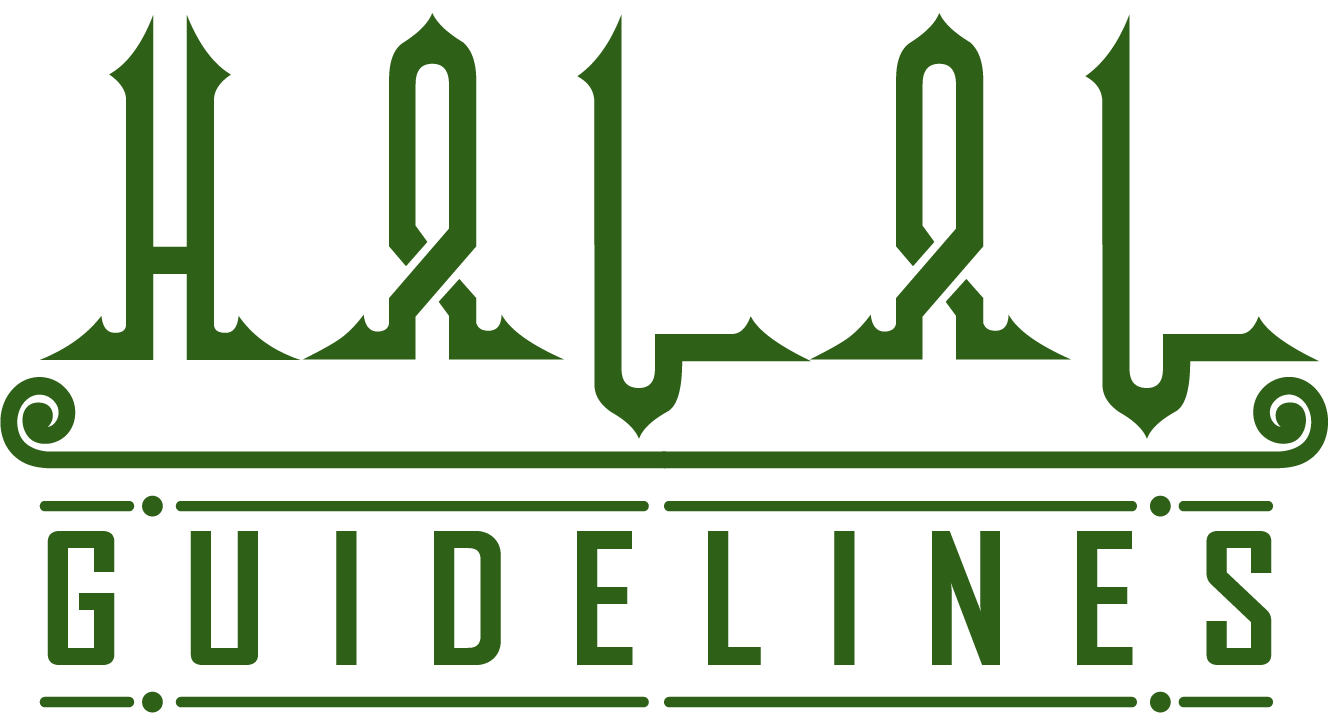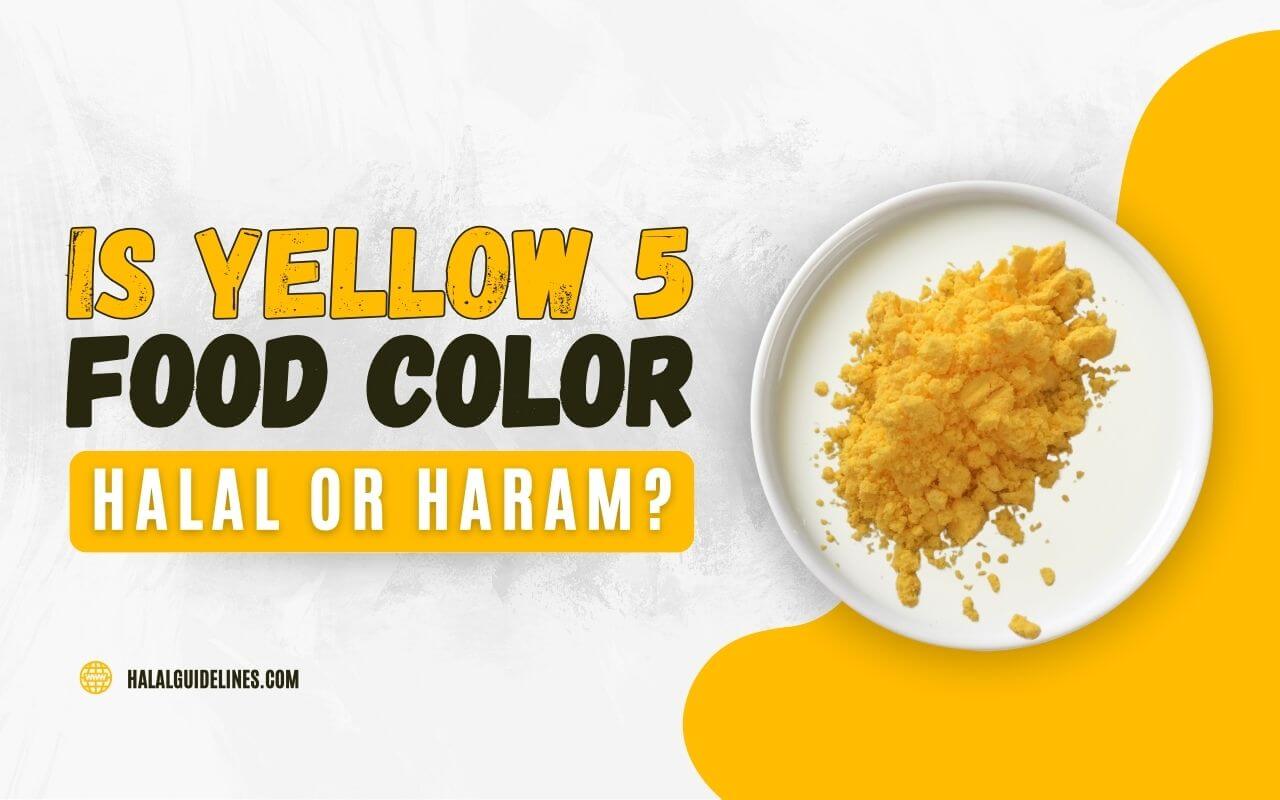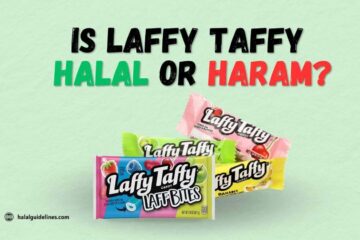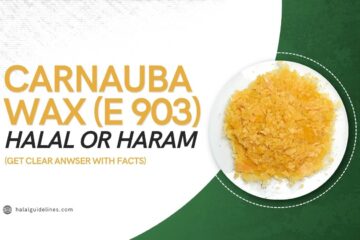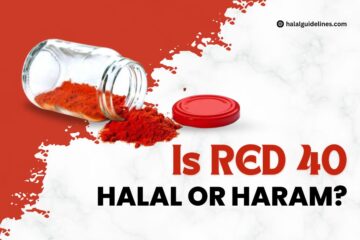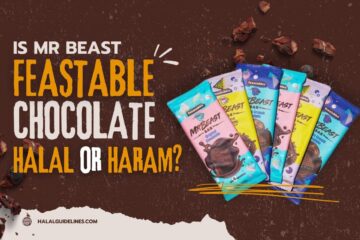While its halal status is clear, some consumers may avoid it due to potential health concerns or allergies. As always, Muslims are encouraged to read ingredient labels carefully.
Ingredients of Yellow 5 Dye That Make It Halal
This color is a ubiquitous food colorant that brings vibrant yellow hues to countless products. It is classified as an azo compound, which is made from a mix of specific elements. These ingredients below make sure, that Yellow 5 is considered 100% halal, making it suitable for Muslims to consume.
Ingredients of Yellow 5 (tartrazine) that Confirms Halal Status
- Carbon (C)
- Hydrogen (H)
- Nitrogen (N)
- Sodium (Na)
- Oxygen (O)
- Sulfur (S)
Yellow 5 is created using basic natural elements that come from petroleum byproducts, making sure that it does not involve any animal-derived components. This makes it fully halal and safe for Muslims to consume. By choosing products with Yellow 5 (E102), you can confidently enjoy vibrant, colorful foods without worrying about their halal status.
List of Items That Contain FD&C Yellow 5 in it

This is a common food color that’s found in a wide range of products we use every day. Its vibrant yellow shade makes it a popular choice for manufacturers to improve the appearance of foods, drinks, and even some non-food items. Knowing which products contain Yellow 5 can help those who follow a halal diet make informed choices.
Items That Contain Yellow 5
- Soft Drinks: Used to give a bright color to lemon-lime and other citrus-flavored sodas.
- Candies: Found in gummies, hard candies, and jelly beans to create eye-catching colors.
- Shampoos and soaps: Adds color to personal care products
- Baked Goods: Added to cakes, cookies, and pastries to improve yellow hues.
- Cereals: Used in colorful breakfast cereals to attract children’s attention.
- Pet foods: Makes pet food more attractive to owners
- Chips and Snacks: Common in flavored chips and snack mixes for added color.
- Pickles: Used in some pickles for a more vibrant, appealing appearance.
- Sauces and Condiments: Found in certain mustards, relishes, and salad dressings.
- Cheese-flavored Products: Added to processed cheese snacks and sauces.
- Vitamins and supplements: Helps distinguish different products
- Cosmetics: Present in some lipsticks, eyeshadows, and other makeup products for color.
- Medications: Used in the coating of pills and capsules for easy identification.
- Ice Creams and Frozen Desserts: Added to refine the color of certain flavors.
As you can see, Yellow 5 is present in a variety of products, from foods and beverages to personal care items and even medications. Its popularity stems from its stability, cost-effectiveness, and ability to create consistent, attractive colors. While it is generally recognized as halal, some individuals may choose to avoid it due to personal preferences or concerns about synthetic additives.
Below are some more interesting articles you can read:
- Is Red 40 Halal Or Haram?
- List of Halal Candies In USA
- Best Halal Restaurants in New York City (USA)
- Is Popeyes Halal Or Haram in the USA?
Does Yellow 5 Food Color Have Any Side Effects or Health Risks?
While it helps create bright and appealing colors, there are ongoing discussions about its potential impact on health. It’s important to understand both the benefits and possible risks associated with consuming products that contain Yellow 5.
Here are some possible side effects of FD&C Yellow 5:
1. Allergic Reactions:

Yellow 5 can trigger allergic responses in some people, leading to symptoms like hives, skin rashes, or swelling. Those with aspirin sensitivity may be more prone to these reactions.
2. Exacerbation of Asthma:
For a small percentage of people, Yellow 5 may worsen asthma symptoms, making it more difficult to manage respiratory issues.
3. Hyperactivity in Children:

Some research has linked artificial food dyes, including Yellow 5, to increased hyperactivity in children, particularly those diagnosed with Attention Deficit Hyperactivity Disorder (ADHD). This has led some parents to avoid products containing this dye.
4. Cancer Concerns:
Though studies are ongoing, there has been some concern about a possible connection between Yellow 5 and cancer, especially with prolonged, high-level exposure. Regulatory bodies consider it safe at the levels commonly found in food, but some studies have raised questions that merit further research.
5. Potential for DNA Damage:
Some studies suggest that Yellow 5 could cause DNA damage, though the evidence is not yet conclusive. This has prompted a call for more rigorous research into its long-term effects on human health.
Muslims need to be aware of its potential side effects and make informed decisions about the products they consume. If you or your family experience negative reactions, consider looking for options that use natural colorings. By staying informed and cautious, we as Muslims can verify our diet aligns with both health and Islamic guidelines.
Other Names for Yellow 5
Due to its common use, it’s listed under different names and codes on ingredient labels, depending on the region, industry rules, or product type. These other names are important, especially for those who follow a halal diet or have sensitivities to artificial dyes.
Here are the common names and identifiers used for Yellow 5:
- Tartrazine
- E102 (European food additive code)
- FD&C Yellow No. 5
- CI 19140 (Color Index number)
- Food Yellow 4
- Acid Yellow 23
- C.I. Acid Yellow 23
- Yellow 5 lake
Why These Names Matter
These various names for Yellow 5 matter for several reasons:
- Ingredient Clarity: Knowing the different names of Yellow 5 helps people make better choices, especially if they want to avoid synthetic dyes or look for halal products.
- Label Differences: Products made or sold in different places might use different names or codes for Yellow 5, so it’s important to recognize them all.
- Health Reasons: If someone has allergies, sensitivities, or dietary restrictions, knowing the various names of Yellow 5 can help them avoid products that contain it.
For Muslims and others concerned about what they consume, knowing the various names for Yellow 5 is key to verifying that the products they use align with their health needs and dietary principles. Always check product labels carefully, and when in doubt, look for products with clear halal certification to make sure they comply with our dietary laws.
How to Spot Yellow 5 in Your Food and Products
Just look at the list of ingredients on the package. Yellow 5 can be called different names, so watch out for “Yellow 5,” “Tartrazine,” “FD&C Yellow #5,” Yellow #5 lake, or “E102”. Sometimes, it might be hiding in the “Contains” or “May Contain” part of the label. Words like “artificial colors” or “color added” could also mean Yellow 5 is inside.
If you have a smartphone, you can use special apps to help you find Yellow 5 in your food. While Yellow 5 is usually okay for Muslims to eat, it’s always good to check all the ingredients to make sure everything in your food follows Islamic rules.
Take a look at the picture below to see what Yellow 5 looks like on a real food label:

Further Relevant FAQs
What is Yellow 5?
Yellow 5, also called tartrazine, is a bright yellow food coloring used in many snacks and drinks. It’s made from safe ingredients and is halal, meaning it’s okay for Muslims to eat.
Is FD&C Yellow 6 halal or haram?
FD&C Yellow 6 is considered halal. Like Yellow 5, it is made from synthetic ingredients without animal products or alcohol, making it suitable for Muslims to consume.
Is Yellow 6 the same as Yellow 5?
No, Yellow 6 and Yellow 5 are different food colorings. They have distinct chemical compositions and are used in various products, but both are synthetic dyes approved for use in food.
Can Yellow 5 cause allergies?
Yes, some people may have allergies to Yellow 5. If you notice skin rashes or breathing problems after eating foods with Yellow 5, it’s best to avoid it and talk to a doctor.
In The End
When choosing our food and products, it’s important to know what we’re consuming. Yellow 5 is usually halal, but we should always read labels to take care of our health. By making careful choices, we can enjoy colorful foods while staying true to our Islamic values.
May Allah help us make the best decisions for ourselves and our families. Let’s work together to live out our faith in all areas of our lives!
